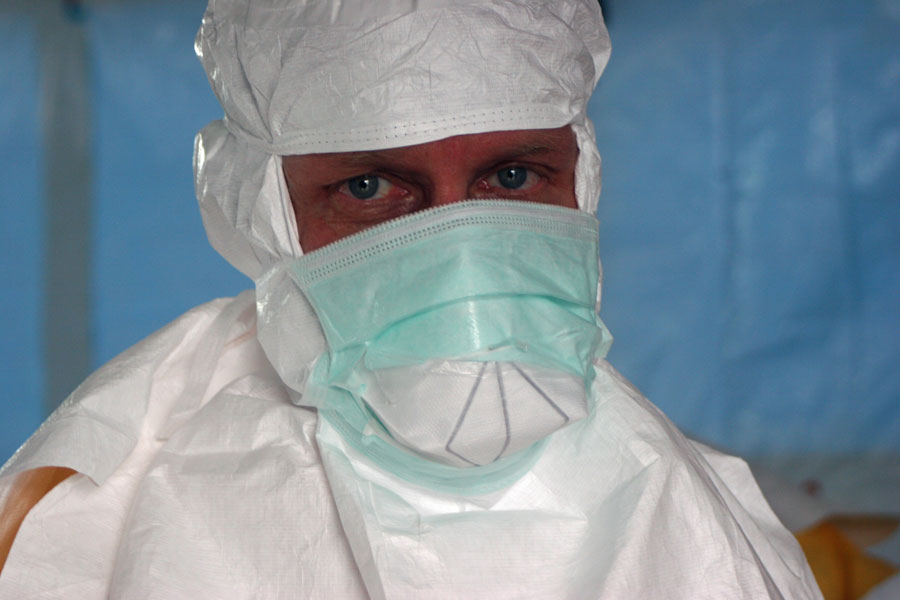Se puede ver al personal del hospital con dos mascarillas una encima de la otra.
La idea de usar dos mascarillas una encima de la otra es promovida por el Dr. Antony Fauci, quien se desempeña como director del Instituto Nacional de Alergias y Enfermedades Infecciosas de EE. UU. Y asesor médico en jefe del presidente de EE. UU. Según él, es de sentido común llevar dos máscaras en lugar de una.
Usar dos mascarillas una encima de la otra puede empeorar las cosas. Lo importante es que el aire que se inhala y exhala se filtra a través de las mascarillas. Por lo tanto, las máscaras tienen que sellar y ajustarse bien a la cara, de lo contrario el aire se deslizará sin filtrar entre la máscara y la cara. Al llevar dos mascarillas una encima de la otra, entonces aumenta la resistencia del aire para atravesar el material filtrante de la mascarilla, lo que hará que se deslice más aire sin filtrar entre la mascarilla y la cara que lo empeorará.
Binghamton University mechanical engineering assistant professor Scott Schiffres, PhD, who’s been working on testing masks since the COVID-19 pandemic began, said that increasing protection isn’t just about adding more layers of filtration.
If the masks are worn in a way that compromises the fit of the masks on the face, this may allow unfiltered air to leak through gaps.
For example, wearing two surgical masks won’t be better than one, Schiffres said.
“It is not the ability of the filter that limits performance,” he said, “but the fit to the face (how much air leaks at the face seal).”
“The surgical mask material itself is very good (>95 percent at 0.1 um), but in practice about 20 percent of the air will slip between the mask and the seal of the mask, so the efficiency would effectively be about 80 percent,” Schiffres said.
“If you were to just put two surgical masks one on top of another, more of the air would actually leak around the seal as the resistance through the masks increases, and even less air would be filtered, making this double masking detrimental,” he said.
“The most important thing,” Schiffres said, “is not to have a false sense of confidence in the filtration of the mask, as it can only be as good as the fit to your face allows.”
(www.healthline.com - Are 2 Masks Better Than 1 at Preventing COVID-19 Spread? What to Know)
Una de las prohibiciones publicadas por la OMS es: “No utilizar mascarillas que dificultan la respiracíon”.
Además, según el Centro Europeo para la Prevención y el Control de Enfermedades (ECDC), se cree que las mascarillas faciales médicas solo tienen un efecto pequeño o moderado para prevenir el COVID-19 en la comunidad. No existe una prueba fiable de la eficacia para que el público use mascarillas faciales, protectores faciales / viseras y respiradores que no sean de uso médico.
The evidence regarding the effectiveness of medical face masks for the prevention of COVID-19 in the community is compatible with a small to moderate protective effect, but there are still significant uncertainties about the size of this effect. Evidence for the effectiveness of non-medical face masks, face shields/visors and respirators in the community is scarce and of very low certainty.
(ECDC: Use of face masks in the community by non-ill individuals)
Hecho:



